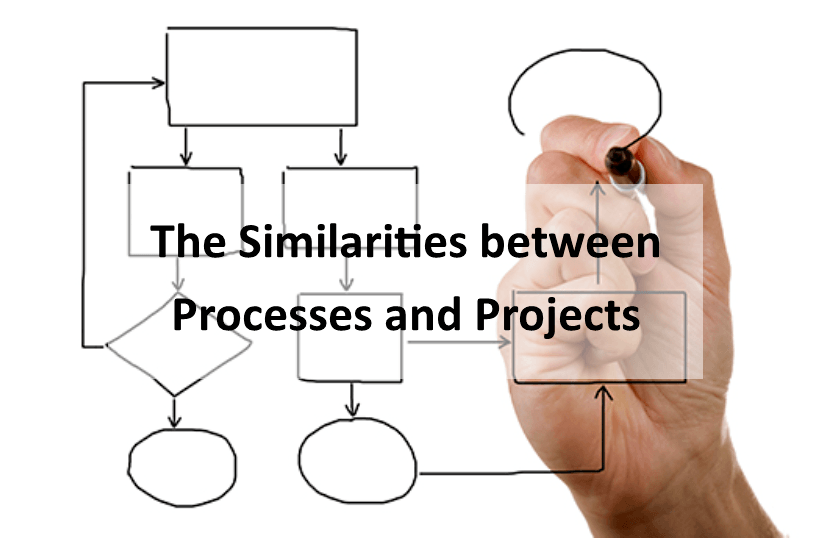In an earlier article I talked about the three different types of work (read it here), processes, projects and general tasks. The two main ones that you absolutely need to focus on are project and processes. If you do not take care of them and specify the projects and design the processes, you will end up in mainly doing general tasks. To much general tasks you will give your a chaotic situation in your business. And on the contrary, to specify your projects and designing your processes, will take you on the path to success.
Projects and processes are best friends, as they are tightly connected to each other. One use the other and vise versa. But what are the differences and similarities between a project and a process? Let me quickly go through it here.
A project is run ones, as a process is run over-and-over. A project ends and is dismantled when it has reached its goal. A process exists as long as there is a need for the value the process creates. That means that your portfolio of projects always change, as projects finish and other start, while your process structure contain the same processes, as long as they are needed.
A project is run by a temporary team of people that are using resources, as machines and premises, which they have for their disposal during the project. When the project is over, the team members and other resources are released and might be used in another project or a process. A process is run by the same set up of resources as long as the processes exist. Team members change whenever it is necessary due to new requirements and/or staff turnover. Resources in projects usually come from all over the place, from within or outside the organization, while processes mainly have a built team running them.
Both project and processes talk about roles that are conducting the work needed. As the roles are connected to performing the specified activities, the competence needed is well defined. This makes it easier for those responsible for staffing to find the right resources for the job.
A project has a clear goal of what to accomplish and when to deliver it. To make that possible, a project has a plan, a project plan, specifying WHAT to do, in what order to do it, and WHEN to do it. The plan results in a set budget and time frame for the project. That means that the team knows the limits of the project when they start. The plan in the project is constantly updated as the project is run and the team learns more. The update of the plan is to ensure the project successfully delivers on target.
A process has no plan for each and every run through in the process. A process has a plan for all the activities in the process, a process description. The process must be designed for success. The better the process is designed, the more efficient it is. Those that work in the process also know WHAT to do, in what order to do it, HOW to do it, and WHEN to do it. The goal in a process is to be able to take care of the “object” being refined in the process, for example an application, within a certain time and by only spending so much energy of doing it. A process constantly redesigned to be able to take care of the next incoming “object” or “objects” more efficiently than the last one(s).
A project is run by a project manager, and a process is run by a process manager. The project manager is responsible for taking the project from start to end, and deliver accordingly to plan. As a project dismantles when the project ends, the project managers’ responsibility ends when the project ends.
A process manager is responsible for the execution in the process, meaning planning, monitoring and following up, and always finding the right resources for the roles defined. The responsibility of the role process managers never ends, as long as the process exist.
A project uses processes to successfully deliver on target. All companies that is professionals running projects have well-designed processes that support the project. Example of these processes is procurement, hiring, staffing, and invoicing. A process might see the run through of an “object” as a project. Example of that is a process rehabilitating someone that need to get back from a severe injury.
That means that both projects and processes are tightly connected to each other.
Make sure that your business knows the differences, and similarities, between projects and processes, as you continue to focus on building your business for success.
To you and your business excellence,
Matts Rehnstrom


